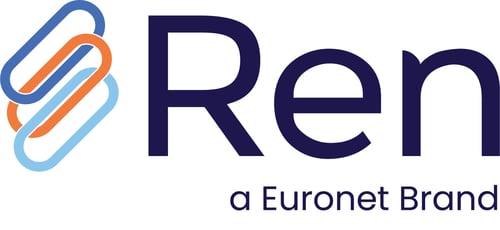The Future of Payments: A Look at Incremental Modernization
In today's rapidly evolving payments landscape, financial institutions are facing a constant wave of shifting consumer preferences, rapid technology innovations and a need for greater efficiency and security.
Traditional payment methods are being challenged and reshaped, and the ability of financial organizations to keep up requires the backbone of an agile modern payments ecosystem that can help maximize innovation and minimize risk. This is essential not only to survive but also thrive.
This blog explores the approach and advantages to incremental modernization for the payments industry, highlighting how it can bring significant benefits without the need to rip and replace existing payment solutions.
Let’s start with understanding how we got here - Why is modernization a relevant and important topic today?
Historically, the world of payments did not see a strong impetus for modernization until around 2010. Take cards as an example. Card-based payments have been around for over 80 years. It all started with the air travel card in the 30s and then it became mainstream with Diners Club and the BankAmericard in the 50s.


The needs in those days were fairly simple. Find a way to Buy Now, Pay Later. And so, over the next six decades, while things generally moved in the right direction, the pace of change and innovation were relatively slow. Magstripes in the 80s and NFC in 2010 were arguably the only 2 major needle movers across these 60 years.
As a result, financial institutions as well as solution providers got comfortable with their legacy platforms that were robust, but not built for rapid innovation. There was no compelling reason for anyone to want to rock the boat. Digital payments were almost non-existent at the time.
Post 2010 came the fintech boom, and the rise of fintechs in the world of payments acted as a catalyst to spur the wheels of innovation. Digital payments encompassing a wide range of technologies, including mobile wallets, contactless payments, and peer-to-peer transfers started to become prevalent. These solutions saw rapid adoption as they offered unparalleled convenience, enabling individuals to make secure transactions anytime, anywhere, using their smartphones or other digital devices.
Advancement of digital payments also brought about a change in customer expectations. The need for instant gratification was amplified with easy access to instant messaging, WhatsApp, snapchat, Netflix binge watching, Amazon same day delivery, etc. Also, in addition to the instant aspect, customers also started to expect everything to be digital. The phone became a magic wand enabling shopping, food, travel, messaging, gaming, payments - all with the swipe of your hands.
With this, several technology concepts like tokenization, biometrics, open banking, real time money movement, etc. started to become more mainstream. And these changes put tremendous stress on the incumbent financial institutions looking to keep pace with the fintech boom. Legacy systems were built for stability but they were never intended to move this rapidly. And over time, legacy systems became even more convoluted with years of enhancements and regulatory updates.
Challenges on the path to modernization
Change is hard and challenging the comfort of status quo is harder. But the question faced by financial institutions today is not “Should we modernize?”. The modern platform is already a great first choice for neobanks and fintechs and as a consequence, there is widespread acceptance among the existing financial institutions (which make up the significant majority of the payments landscape) that they must also modernize if they want to remain competitive.
The real issue is the readiness and ability of not just the financial institutions but also the incumbent solution providers to move off legacy platforms to robust modern platforms. How can this be done without creating a huge ripple of cascading impacts? If you were looking to modify only your kitchen but had to tear down the whole house to do it, would you?
This is where incremental modernization is the key to success.
Incremental Modernization: What you need to know?
Incremental modernization is an approach that enables the freedom to evolve legacy systems at any desired pace without a “rip & replace” approach. Incremental modernization can be applied to enhance existing payment systems, processes, and technologies while minimizing disruption to businesses and customers. Institutions can pick specific parts and/or sub parts of their payments stack that they would like to modernize and conveniently rack and stack to the need of the hour.
There are 4 key elements of this approach to consider:
1. Real vs Quasi Modern: When we talk about a modern platform, we should ideally avoid the trap of the quasi-modern platform - a legacy platform that has been cloaked in APIs to appear modern. What is important is to pick a truly 100% modern solution that has been architected and built from the ground up with absolutely no legacy heritage or infrastructure
2. Robust Foundation: While the capabilities can be a roadmap over time, the platform must come with a robust foundation on day one. This is the foundation that enables convenience, scalability, reliability, security, flexibility and performance. With the right foundation in place, it will greatly improve the ability to add capabilities on demand whether it be virtual cards or real time payments or loyalty solutions.
3. Comprehensive Stack: Another key to incremental modernization is the ability to scale horizontally across the entire domain of payments - card issuing, acquiring, network switching, real time payments, cross border payments, ACH, wires, etc. If the modern platform can only support card issuing for instance, then the ability to incrementally modernize is limited to just one domain and trying to piece together multiple assets to get a comprehensive payments experience will add complexity and negate some of the benefits.
4. Credible Partner: While there are several startups and fintechs offering modern payment solutions, the ideal partner needs to be stable and credible - one that has been and will be around for years to come. Data and research show that 3 out of 4 startups fail. This move is a big strategic investment for the future and it is important to eliminate organizational risks by picking players that offer modern solutions along with the backing of a strong and financially stable enterprise.
The bottom line is that modernization is absolutely key to thriving in today’s dynamic payments landscape. Incremental modernization presents a compelling approach for the payments industry offering maximum flexibility with minimal risk on the path to modernization. This approach helps remove the barriers to risk-based decision making and helps kickstart the journey towards a modernized solution stack.
Invest in the right partner, right solution and right approach and success is guaranteed to follow!
Upgrade to Next-Gen Payments Technology
The rapid evolution of payment technology demands forward-thinking strategies. Our guide offers detailed insights to help you modernize your systems and keep pace with industry advancements. Prepare for the future—download your guide today!
Read More About:
Card Issuing
Switching
ATM Management
Payment Platform
Dynamic Currency Conversion
Payment Hub
Real-Time Payments
Comments

Vishal Pasari
Vishal is a seasoned product management professional who has spent the past two decades creating and running products that help financial institutions drive better customer experiences. At Euronet, Vishal is responsible for the product strategy and go to market execution of the Ren platform, a modern, real-time payments solution that enables banks, fintechs and payment processors to execute effectively on a comprehensive payments experience. Vishal is passionate about helping clients succeed in the dynamic world of payments and brings over 23 years of financial industry experience to make that happen. Vishal holds an MBA in Finance and is based out of Atlanta (USA).


